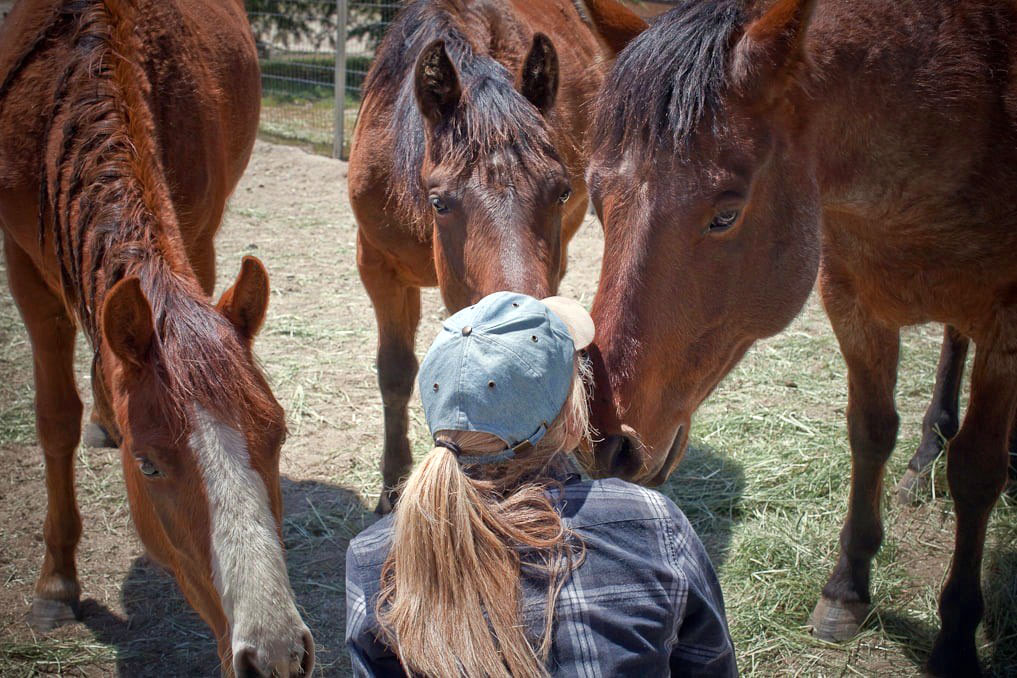By Sheryl Lynde | Horsetrader columnist

Our nature is to live our lives in some semblance of stability. We find comfort in order, routine, and consistency.
Yet, in reality, everything about life changes. We look for a step-by-step formula to get from A to B, preferably by way of a straight line. But we spend too much time trying to control our lives and not enough time trying to understand it. I think it’s the space in-between the letters A to B is where your life unfolds, where you learn, where you grow. Just as in music, it’s the silence between the notes that creates the melody.
If we pay attention to the little things, the subtleties, the goal takes care of itself. Goals are like a map: They give aim to the destination of your desires. But, if arriving at your end destination supposedly brings you stability and order, why is it that you soon begin plotting a course to a new destination?
It’s only when we venture out of our comfort zone that we find breakthroughs and raise the bar to a new level of uncertainty. You will stumble in the dark, feel awkward, and be humbled in the beginning, but you will find your way as long as you don’t give up.
I think you are remembered more for the road you have traveled than the goal you have accomplished.
Some young horses have come to me that I would define as “born broke.” They had an even temperament and sailed quickly through training, no bumps in the road. They were evenly matched with their owner’s ability — and all was well when they were loaded up in the trailer and headed for home. If this was your only experience starting a colt, it could give you a false sense of accomplishment, perhaps an unrealistic view of your skills which could get you into trouble down the road at your second attempt with an unruly youngster.

But, if you had started with the unruly youngster, you would have learned a great deal — and possibly you would have learned how much you don’t know.
The toughest horses that have come to me for training have been my best teachers. The older horses that had never been started were the biggest challenges.
I had a 9-year-old Thoroughbred come to get started. She had been out in a pasture with her dam since she had been born — neither horse had ever been under saddle, nor had they been separated. The owner had experienced some difficulties; she was losing her home and had to relocate — and could only keep one of the horses. Luckily she found a great owner for Pacer, and she was brought to me for training.
There were many issues we had to overcome, the first being her separation from her lifelong companion, her dam. She also had to adjust to being handled by a new human in new surroundings while being asked to perform unfamiliar tasks. When I think back at what this mare had to overcome, I remain amazed. The goal was to get her started under saddle, but the road to that goal was a rugged and formidable climb.
She continually paced and cried out in her pen even though she was surrounded by other horses. She felt a great loss. I learned how critical it was to her well-being to get her attention through tasks that were easily accomplished and varied. I broke everything down into smaller steps that brought her attention to her present surroundings, not necessarily to me, but to the task at hand. She hadn’t been off her property either, so ponying her proved to be invaluable in helping her adjust to her new normal. My gelding was a great example for her; he brought her comfort and confidence through his calm demeanor.
It isn’t unlike being there for someone who has suffered through great hardship. The greater the pain, the quieter you are. Slowly and quietly you can interject a plan broken into very small steps that they can carry out. This gives them a new glimpse of purpose, order through chaos, a lifeline.
There are parallels between the human condition and horse behavior. By exploring these similarities, insights were revealed on how to help this mare through the training process.
The groundwork was effective and not overused. When she completed each exercise we moved on to saddling and then riding. Eventually, she moved through the program. The training took longer — it usually does with an older horse, but an older horse with issues took extra time. I think of her often and all that she taught me, especially about resilience. She is a better horse for her journey, and I am a better trainer because of her.
–Sheryl
Leave a Comment
All fields must be filled in to leave a message.